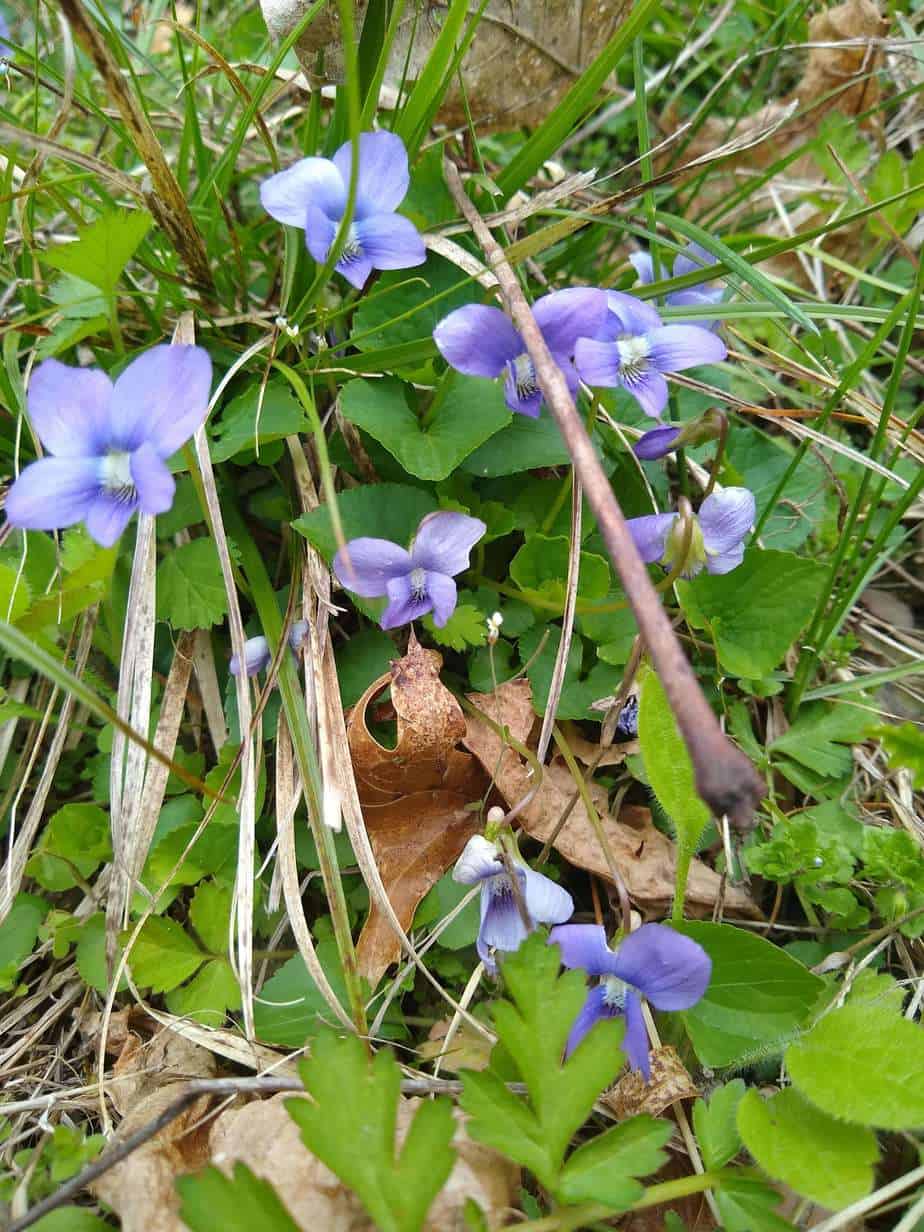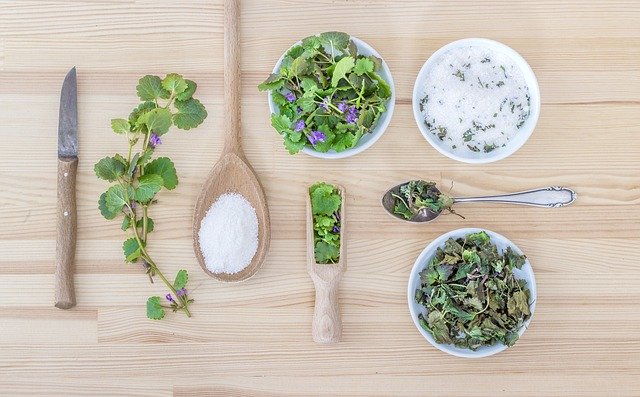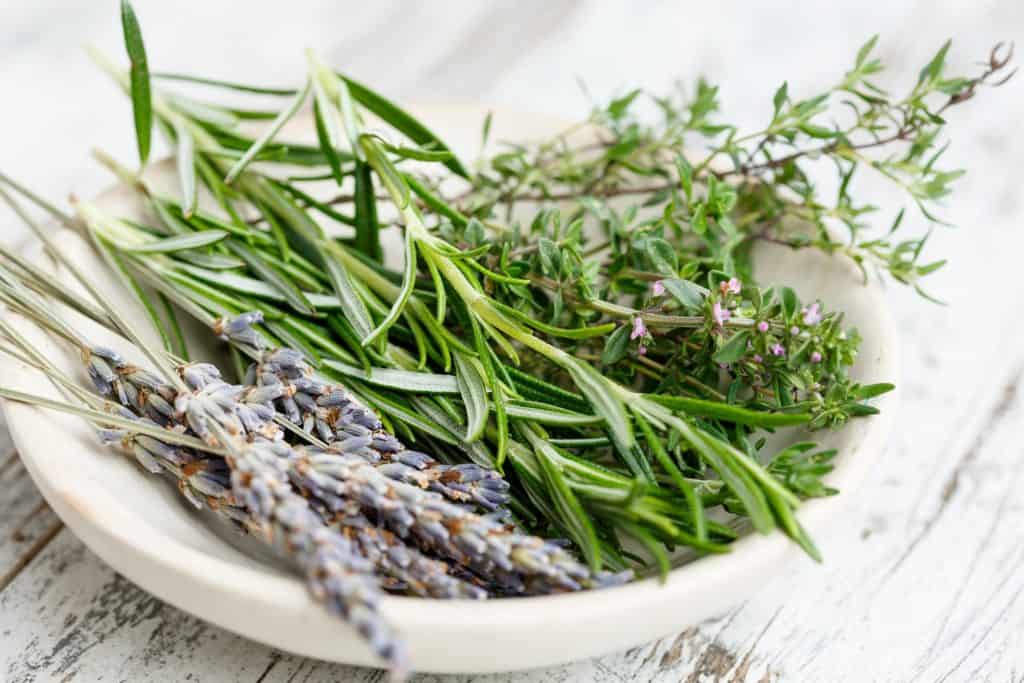Every aspiring home herbalist needs to grow their knowledge of common herbs right along with their herb gardens. Today, I’m featuring the violet. They can be seen growing freely in the springtime everywhere, from yards to woodlands.
This series of blog posts will introduce you to 8 common medicinal herbs and weeds and how you might want to use them in your home apothecary. Of course, there’s much more to know about each plant, but hopefully this will be enough to inspire your curiosity.
Violets
Violets are small purple flowers found blooming in fields and backyards. This amazing little wild plant is often found growing right in your own backyard. It’s mostly overlooked or thought of as a weed. Like the dandelion and so many other plant allies that are thought of as weeds, some will see it as a friend and others will see it as a plant to be eradicated.
Wild violets can be found as the first plant to start growing in the spring. (Be sure you’re using the right thing if you collect these from the wild; a good field guide will help you identify the correct plant.). (African violets, usually kept as houseplants, are not edible.) Once it starts blooming, you can gather as many of the flowers as you want since the violet will keep growing. This plant loves the attention and will produce even more flowers. Be sure to collect these in areas that haven’t been sprayed with chemicals. Avoid roadsides and pet bathroom areas too. Violet flowers and leaves are better harvested after the morning dew has dried in the spring.
Violet – Natures Vitamin C
Violets are Mother Nature’s gift to us for vitamin C. Violets have plant medicine properties that keep on giving. The leaves have other healing properties as well, producing vitamin A.
Studies done by Mr. Euell Gibbons back in the 1960s show that just a half a cup of these tiny purple flowers will give your body as much vitamin C as four oranges! Yes, you’re reading that correctly four oranges. That’s more than enough vitamin C (which your body needs each day) to keep you healthy.

Photo isn’t for identification purposes, please refer to a plant directory or field guide.
Many uses
Violets are also beneficial when added to many different types of healing products. These can be made into an alcohol tincture for a longer shelf life and then put into a jar with a dropper for smaller dosages. Violet tincture is used for cradle cap in babies, hives, or rashes. It can be added to other healing plants and made into beneficial skincare products.
You can try adding it to olive oil as a fabulous salad dressing, while adding a bit of vitamin C to your diet in a yummy way.
You can even make a marvelous jelly with the flowers. Here is a recipe, so you can make some yourself.
Water-Bath Canning Violet Jelly
What you’ll need:
Large water-bath pan with a wire rack
Pint Glass jars with canning lids
2 cups violets
Water
Package of pectin
Lemon juice
4 cups of sugar
Jar lifter tongs
Be sure you have enough time allotted for the whole canning process.
Add violets to any size glass jar, but use at least 2 cups of violet flowers. Boil water and add it to the jar, being sure to cover up all the flowers. Add the lid and allow it to steep for at least 24 hours. Note: You can do this in a jar, but I use a glass pan since I’ve had jars break with the addition of boiling water. (keep in mind you’ll want to have 2 cups of the infusion to use in the process below.)
Tip: Corelle Visions are the glass pans I use and love for all of my herbal preparations. I noticed that over on the website for these, if you sign up for the newsletter, you can get a discount on your purchase as of this writing. That’s a win! Go to: correlle.com to check out their glass pan options.
After the flowers have lost all their color strain out all plant material from the infusion. (If you’re not using this right away, store it in a clean jar with a tight lid. (This will keep in the refrigerator for up to a week.)
Now mix 2 cups of violet infusion in a bowl with lemon juice and a package of pectin. Add to a saucepan and bring to boil, then add sugar. You’ll want to bring this to a boil again and let it boil for a minute, at least.
Add to sterilized jelly jars. To be sure they are sealed, process with a water bath canner.
You can use a water bath canner or a large pan for this. It needs to be deep enough to add a rack at the bottom of the pan and the jars need to be covered with water by 2 inches. It needs space enough for the water to boil without spilling out.
Water-Bath Canning Process
Add a rack to the pan, then fill the pan with water so that the water is covering up the rack by 1 inch.
Note: If you’re using a water bath canner, this rack will likely be included with the canner. If you’re using a pan you already have, racks are available at retailers like Walmart and Amazon
Bring to boil before adding the filled jars with lid caps. Be sure the jars are still warm, adding jars a little at a time until the pan is full of jars. Be sure to leave a little space in between the jars so the water can boil up between them.
Keep at least 2 inches of water over the jars. Begin timing after the water comes to a boil again. It’s usually a 5 minute processing time.
Tip: To be sure that you can add boiling water if you need to, you can keep a separate pan of water boiling on the stove. This way, you won’t have to start your processing time over again. Adding new water will often mean that you have to bring the water to a boil again, and that resets your processing time.
Remove the jars as soon as the time is up with the jar grabber.
This jelly makes a fantastic treat on vanilla wafers with a cup of chamomile tea.
Summary: Violet
So how do you think of the violet? Weed or plant ally? It’s my hope that after reading this, you’ll see it as more of a friend than a nuisance. Returning my yard to its natural state and allowing the weeds to pop up has been one of the best things I’ve done for my gardens. Eliminating toxic chemicals both inside my home and in my gardens pays off in new ways all the time as new “weeds” appear. If you’re unable to find them or don’t feel comfortable with wild harvesting them, be sure to check herb suppliers like Mountain Rose Herbs to buy them.
How will you use the violet?
Check out the Other Posts in this Series
What is Plant Medicine? The Basics.
Learning Plant Medicine for Beginners
Start your Own Home Apothecary: Tools & Methods
8 Plant Medicines Found in your Kitchen
Plant Medicine to make in the Fall
Disclaimer: I’m not a medical doctor or an herbalist. This article isn’t intended to be medical advice. Not all plants are safe to use. Some are toxic and can be deadly. Other herbs may cause an allergic reaction in some people. Always consult your doctor, healthcare provider or a qualified herbalist before using any type of plant medicine.


